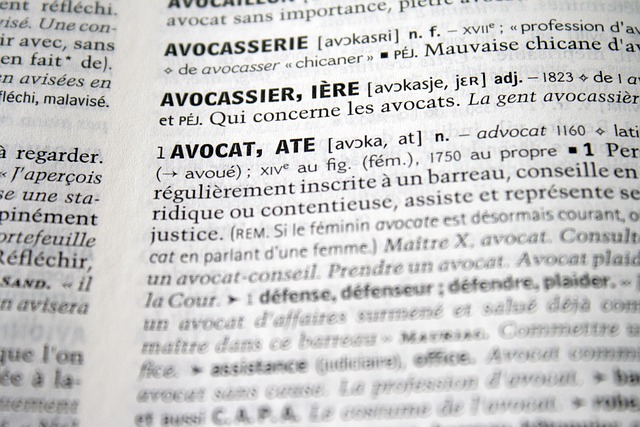Rural and urban areas enforce distinct DUI laws, with strict regulations in cities due to high traffic volumes and lower penalties in rural regions because of lower population densities. Ride-sharing drivers face unique challenges, as their frequent travel and passenger interactions require them to navigate varying legal landscapes. Urban areas have stricter rules with more patrols and breathalyzer checks, while rural areas may have less stringent regulations but longer response times for law enforcement. Ride-sharing driver defenses differ based on location, focusing on traffic stop legitimacy in rural areas and test administration issues in urban settings. Future legislation is expected to adapt to the rise of ride-sharing, aiming to close loopholes, enhance public safety, and ensure fair treatment for all drivers.
In the vast spectrum of DUI laws, rural and urban areas present distinct challenges due to varying population densities. This article delves into the key differences between these jurisdictions, exploring how density impacts driving regulations. We examine the unique hurdles faced by ride-sharing drivers, analyzing legal considerations specific to their roles. Furthermore, we dissect venue-based penalties and sentencing guidelines, offering insights on effective defense strategies for rural and urban DUI cases. Finally, we gaze ahead at potential future trends in DUI legislation.
- Understanding Rural and Urban DUI Laws: Key Differences
- Impact of Population Density on Driving Regulations
- Ride-Sharing Drivers: Unique Challenges and Legal Considerations
- Venue-Specific Penalties and Sentencing Guidelines
- Defense Strategies for Rural and Urban DUI Cases
- Future Trends in DUI Legislation: A Look Ahead
Understanding Rural and Urban DUI Laws: Key Differences

In the realm of driving under the influence (DUI) laws, rural and urban areas often have distinct regulations that reflect their unique characteristics. Rural settings, typically characterized by lower population densities and more spread-out communities, may have less stringent DUI penalties compared to urban centers. This is partly due to the reduced impact of drunk driving on densely populated cities where the potential for accidents and harm is generally higher. In contrast, urban DUI laws often focus more on public safety considerations given the heavy traffic volumes and congestion.
When it comes to ride-sharing drivers, such as Uber or Lyft operators, the legal landscape can become even more intricate. Urban areas may have specific regulations targeting ride-sharing companies to ensure adherence to strict DUI standards. In rural regions, where ride-sharing services might be less prevalent, there could be looser rules, but drivers still face potential consequences if they operate under the influence. A key difference lies in the enforcement strategies; urban police forces may employ more proactive patrols and breathalyzer checks, while rural law enforcement might focus on investigating accidents or receiving tips about suspicious behavior.
Impact of Population Density on Driving Regulations

In high-density urban areas, where countless vehicles and pedestrians share the roads, driving regulations are typically stricter to ensure safety. This includes more stringent DUI (Driving Under the Influence) laws, often with lower blood alcohol limits than in rural regions. The increased population density necessitates enhanced safety measures, leading to tougher penalties for offenses like DUI. Urban centers frequently have well-established public transportation systems and ride-sharing networks, which can reduce the reliance on personal vehicles, further influencing the leniency of driving regulations.
Conversely, rural areas with lower population densities may have less stringent DUI laws due to the smaller number of people and vehicles on the roads. Here, ride-sharing drivers or those who live remotely might face different challenges when it comes to DUI defense. The sparsity of resources and services can make it harder for individuals in these areas to access the same level of legal support as their urban counterparts, potentially impacting their ability to navigate complex DUI charges effectively.
Ride-Sharing Drivers: Unique Challenges and Legal Considerations

Ride-sharing drivers face unique challenges when it comes to DUI (drunk driving under influence) laws, as their work involves frequent travel and interaction with passengers. These drivers must navigate not only rural and urban areas but also adhere to strict legal considerations that differ significantly between regions. In many jurisdictions, ride-sharing companies have specific policies and guidelines for their drivers, which can serve as a DUI defense strategy. For instance, if a driver can prove they were following company protocol regarding safety and passenger dropoff, it might mitigate the legal consequences of a DUI arrest.
The legal landscape is further complicated by varying drunk driving laws between rural and urban settings. Urban areas often have stricter enforcement policies with more frequent patrols, while rural regions may have less stringent regulations but longer response times for law enforcement. Ride-sharing drivers must be cognizant of these disparities to ensure they remain compliant with both local laws and their company’s standards. This dual consideration is crucial in managing potential DUI-related issues and ensuring the safety of all parties involved.
Venue-Specific Penalties and Sentencing Guidelines

In rural areas, where populations are typically smaller and less dense, DUI penalties and sentencing guidelines may be less stringent compared to urban centers. This disparity often stems from varying economic realities and community needs. For instance, a ride-sharing driver facing a DUI charge in a rural setting might encounter lighter fines or shorter license suspensions due to the limited public transportation alternatives available. Additionally, courts may consider the overall impact on the local community, which often experiences fewer drunk driving incidents due to lower urban congestion.
In contrast, urban jurisdictions often enforce stricter penalties, reflecting the higher risk and impact of DUI offenses within densely populated areas. With heavy traffic, limited parking, and a multitude of ride-sharing services, urban courts may impose harsher sentences to deter repeat offenders and protect public safety. This includes potential enhanced penalties for commercial drivers, such as ride-sharing drivers, who are held to higher standards due to their role in transporting passengers and navigating often challenging city streets.
Defense Strategies for Rural and Urban DUI Cases

In rural areas, defense strategies for a DUI case often involve leveraging the lack of police presence and limited resources to cast doubt on the validity of the traffic stop. This might include challenging the officer’s judgment in pulling over a vehicle based on vague or subjective reasons. Ride-sharing drivers can also argue that their behavior was not indicative of intoxication but rather normal activities common among rural residents, such as running errands or attending local events.
In urban settings, where police are more prevalent and have access to advanced tools like breathalyzers and field sobriety tests, the focus shifts to questioning the administration of these tests. Urban DUI defenses may include allegations of bias, improper training, or equipment malfunction. Additionally, ride-sharing drivers in urban areas can employ strategies that highlight their professional background, such as demonstrating adherence to safety protocols and the use of advanced technology for passenger safety, which might mitigate the severity of their actions on the night in question.
Future Trends in DUI Legislation: A Look Ahead

As technology advances and societal trends shift, future DUI legislation is expected to adapt accordingly. One notable trend already gaining traction is the integration of ride-sharing services into drunk driving laws. With the rise of platforms like Uber and Lyft, regulations are beginning to address the unique challenges posed by these services. For instance, states might implement stricter standards for driver fitness, including mandatory sobriety checks or enhanced background screenings for all ride-sharing drivers.
Additionally, there could be a move towards more uniform DUI laws across urban and rural areas, recognizing that drunk driving is a national issue regardless of location. This shift would aim to close loopholes often exploited in rural settings, such as lenient sentencing or less stringent enforcement, while also ensuring fair treatment for all drivers. Furthermore, the legal landscape might see a greater emphasis on public safety measures, including stricter penalties for repeat offenders and increased funding for impaired driving prevention programs.
In conclusion, navigating rural vs. urban DUI laws requires a nuanced understanding of how population density shapes driving regulations, particularly for ride-sharing drivers facing unique challenges. Venue-specific penalties and sentencing guidelines necessitate tailored defense strategies. As legislation evolves, future trends in DUI legislation promise to further refine these distinctions, impacting not only traditional drivers but also the growing number of ride-sharing drivers. For those seeking a robust Ride-Sharing Driver DUI Defense, staying informed about these shifts is paramount to ensuring fair treatment under the law.






